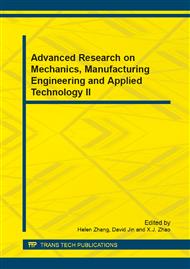p.13
p.17
p.21
p.25
p.30
p.35
p.39
p.43
p.48
Research on Chemical Materials with Characteristic on Chemical Looping Combustion of Co-Doped Fe2O3 Oxygen Carrier with CO
Abstract:
Co-doped Fe2O3 oxygen carriers reacted with CO were investigated in order to study the temperature effect on the redox characterization.Co-Fe2O3 were characterized with X-ray diffraction (XRD), BET and transmission electron microscope (TEM), which showed that the surface structure was regular, and the polymorph was stable. The TG (Thermo Gravimetric Analyzer) analysis indicted that, rational doping Co could enhance the reactivity of iron-base oxygen carrier reacted with CO under different conditions. Oxygen carrier with Fe: Co molar ratio of 1:0.1 had best reactivity. With the temperature increased, the reduction degree became deeper and the complete conversion time shortened. The reduction reaction Co0.1Fe oxygen carrier with CO was carried out step by step, and the entire process was divided into three stages, namely 344.7-391.0, 414.7-472.5 and 607.6-681.5°C.
Info:
Periodical:
Pages:
30-34
Citation:
Online since:
April 2014
Authors:
Price:
Сopyright:
© 2014 Trans Tech Publications Ltd. All Rights Reserved
Share:
Citation:


